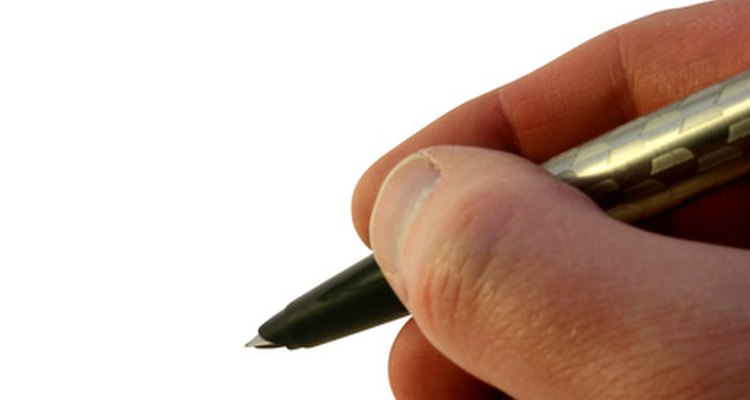
Graphologists, those who make a scientific study of handwriting, have differing opinions about whether examining a sample of handwriting can reveal the sex of the author. Graphologists tend to focus on a person's personality traits, and claim that a person with feminine traits may have feminine handwriting whether the author is biologically female or not.
Identifiable Differences
Males and females do tend to have identifiably different handwriting. The general public is able to identify the sex of the author of a sample of handwriting approximately two-thirds of the time. Graphologists argue that the influence of personality overrides the influence of gender and the gender of the writer cannot be identified with precision.
Masculine Handwriting
Transsexual Road Map's website describes the handwriting of English-speaking males as "hurried, uneven, messy, spiking, sloping and bold." These characteristics are sometimes seen in those who speak other languages as well, but the commonalities are believed to be more cultural than inherent.
Feminine Handwriting
Transsexual Road Map's website suggests that English-speaking female handwriting is often "neat, even, round, small, ornate and symmetrical." The commonalities are, again, likely cultural.
Word Choice
Another element of graphology is word choice. Men and women, broadly speaking, use language slightly differently. Women tend to speak more about people and relationships, using words like "I, you, their, myself" while men tend to talk more about things and quantities, using words like "that, one, more, a."
Related Articles

Do Men & Women Use Nonverbal ...

How to Look More Masculine in the Face

Barriers to Effective Verbal ...

The Differences Between Men's & Women's ...

The Difference Between Verbal & ...

The Difference Between Houndstooth & ...

How to Address an Envelope With ...

What Does It Mean to Score Roast Pork?

How to Stop Female Facial Hair

What Is the Difference Between a ...

Tanzanite Vs. Diamonds

What Does a Committed Relationship Look ...

Dating a Man Who Is Feminine

Differences in Listening Between a Man ...

How Much Whole Grain Should You Eat a ...

Difference Between Hourglass Figure & ...

How to Trim the Length of False Lashes

What Is a Slave Bracelet?

What Is the Meaning of Judgmental?

Calories in a Mini Mars and a Milky Way ...